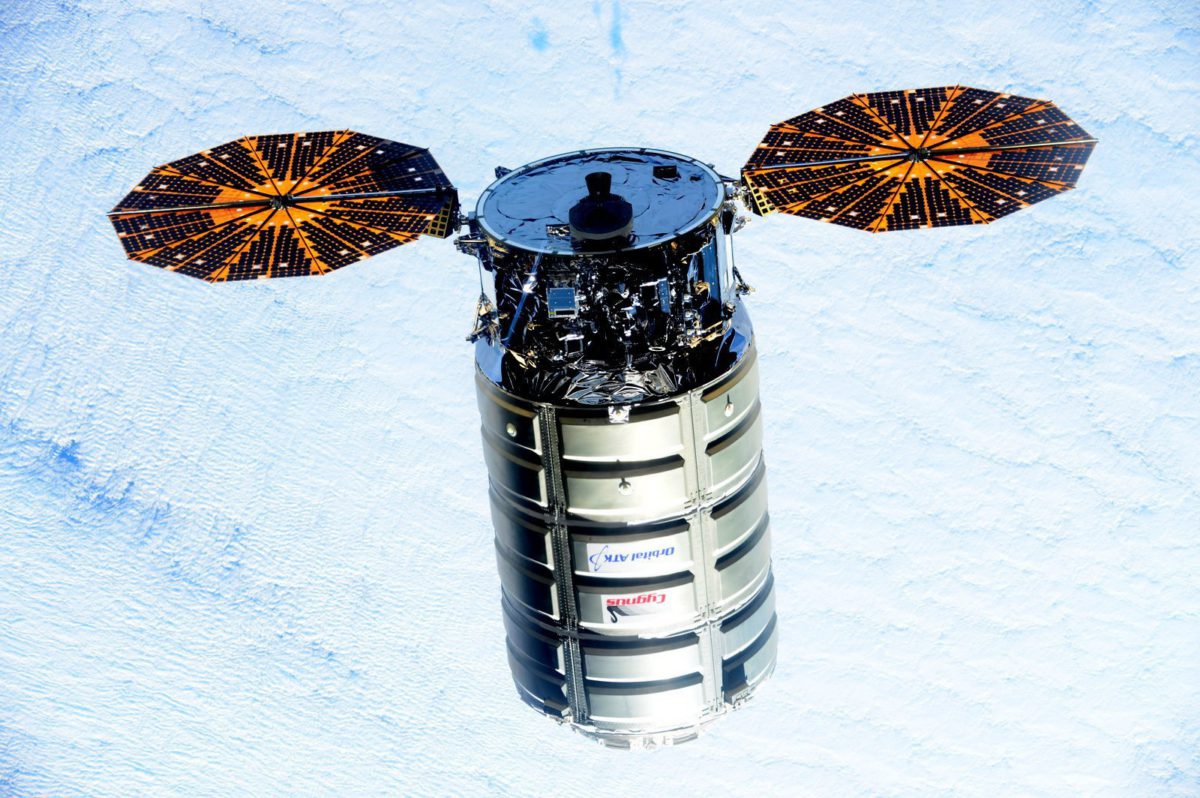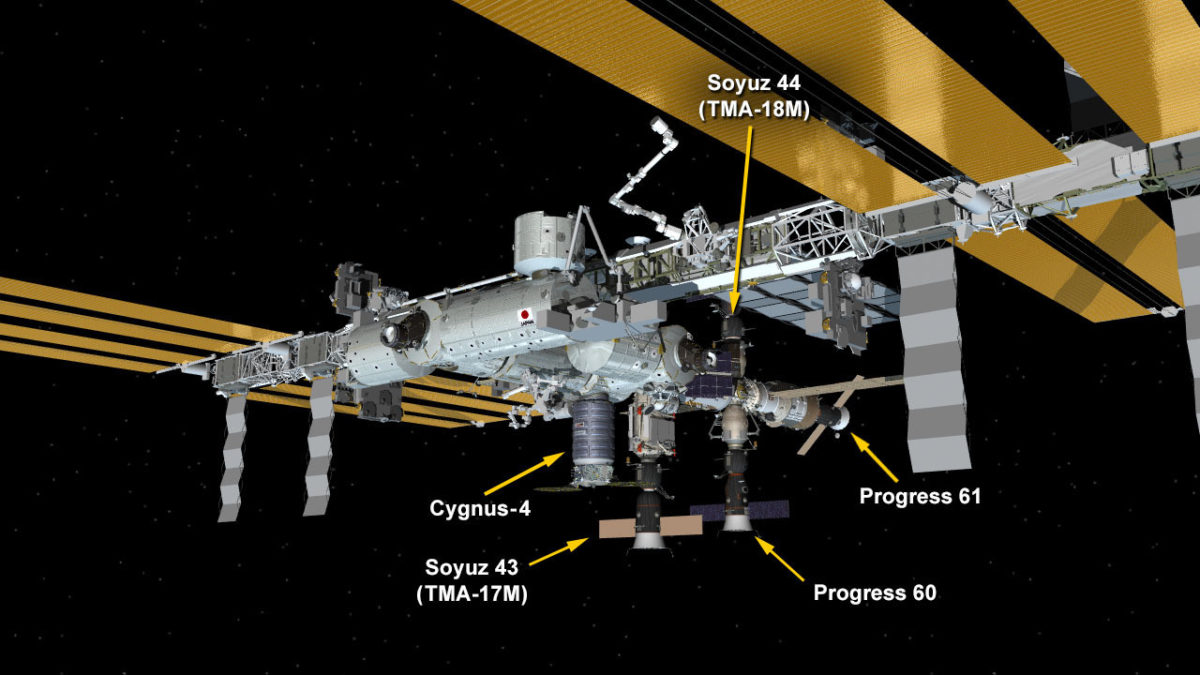Jason Davis • Dec 09, 2015
Cygnus Arrives at Station, Marking Restart of U.S. Cargo Flights
In the wee hours of Wednesday morning, NASA astronaut Scott Kelly signaled Mission Control Houston with a tally-ho, indicating his crew had spotted a Cygnus cargo spacecraft amid the blue-and-white backdrop of our planet. At that time, the International Space Station was 400 kilometers above the South Atlantic Ocean, flying at a speed of more than seven kilometers per second.
Even faster than that was a corresponding Twitter transmission from cosmonaut Sergey Volkov, which traveled at the speed of light down to Earth, sharing a view of Cygnus with the rest of the world:
The #ISS is getting ready to capture #Cygnus pic.twitter.com/Css9TLfby3
— Sergey Volkov (@Volkov_ISS) December 9, 2015The new Cygnus—lengthened to accommodate more cargo, and sporting upgraded, circular, solar arrays—looked particularly pristine as it sidled up to the station. All visiting ISS cargo vehicles are new, but a spacecraft on its debut mission tends to look extra spotless. A NASA TV commentator agreed. "A beautiful view of this brand-new cargo vehicle," he said.
This is the first U.S.-provided cargo vehicle to visit the station since a SpaceX Dragon arrived in April 2015. It is the first Cygnus to fly without the help of an Antares rocket, as Orbital ATK continues to prepare the launcher for a 2016 return-to-flight following an explosion last year. Cygnus made it to orbit Sunday courtesy of a United Launch Alliance Atlas V rocket. It took four tries for the weather in Cape Canaveral to cooperate.

With Cygnus holding position just 10 meters beneath the station, NASA astronaut Kjell Lindgren, assisted by Scott Kelly, moved the station's robotic Canadarm into position. A camera mounted on the end of the arm showed the cargo craft sliding into view. The thermal blanket-covered aft end contained a grapple fixture and an engine nozzle.
#Cygnus arrives at capture point. @Astro_Kjell will maneuver @CSA_ASC robotic arm to grab spacecraft. https://t.co/FFNADtmAeq
— Intl. Space Station (@Space_Station) December 9, 2015Moments before capture, the station moved out of live television satellite range. A computer-generated mockup in Houston showed Canadarm inch closer to Cygnus, eventually making contact. The spacecraft rendering shifted a few pixels downward as a result of the small bump.
"Capture confirmed; 5:19 a.m. Central—6:19 Eastern time," came the call from Mission Control. In the following hours, Cygnus was moved from its capture point to the Earth-facing port of Unity, also known as node 1. It was bolted into place at 9:26 a.m. EST. Cygnus is the first cargo vehicle to be installed on Unity, making room for the potential arrival of SpaceX's Dragon capsule in January.
The crew will now begin offloading more than three metric tons of cargo from Cygnus, including air tanks, astronaut provisions and scientific experiments. It will then be stuffed with trash and sent back into Earth's atmosphere for destructive reentry sometime in January.
Support our core enterprises
Your support powers our mission to explore worlds, find life, and defend Earth. You make all the difference when you make a gift. Give today!
Donate

 Explore Worlds
Explore Worlds Find Life
Find Life Defend Earth
Defend Earth


